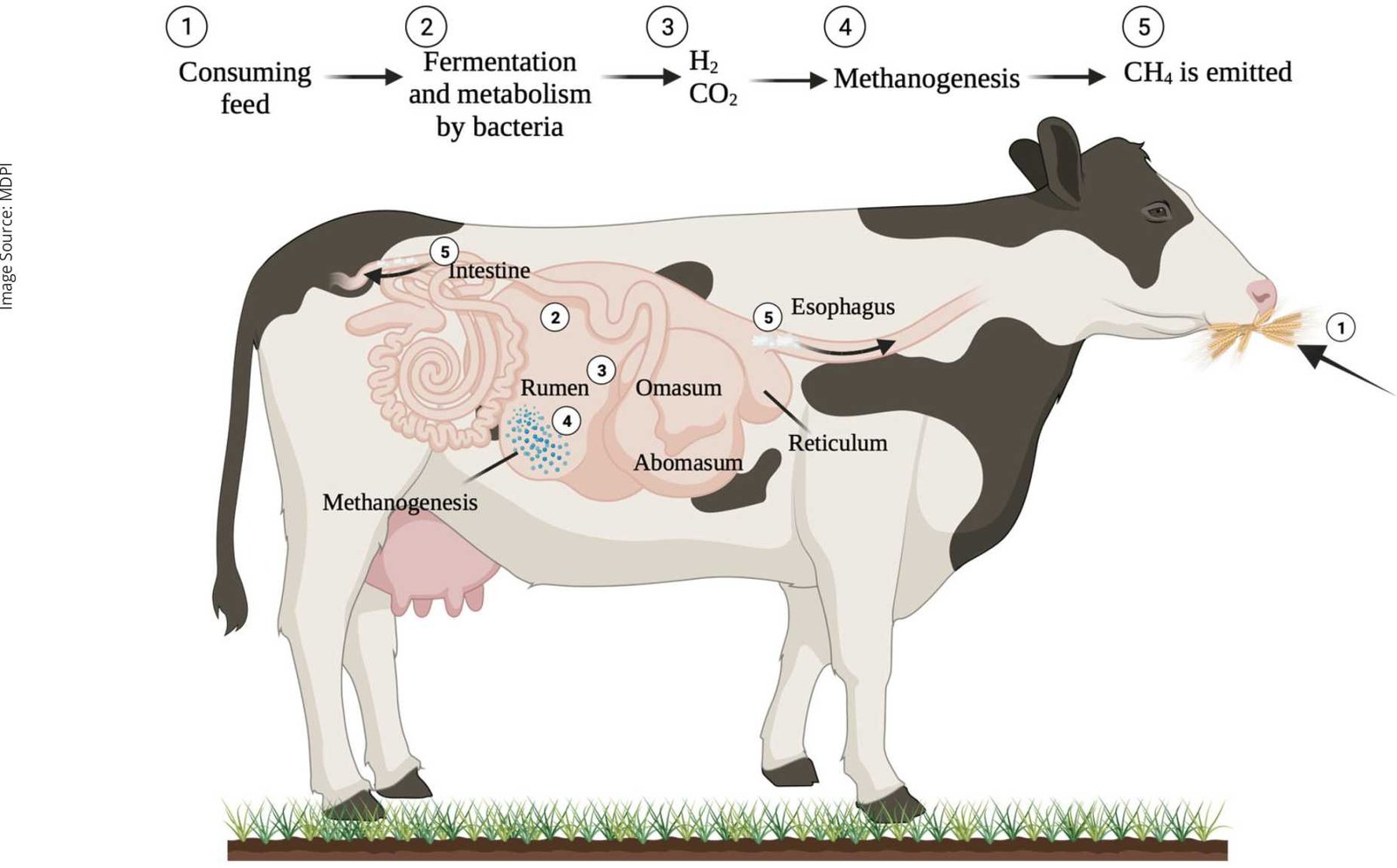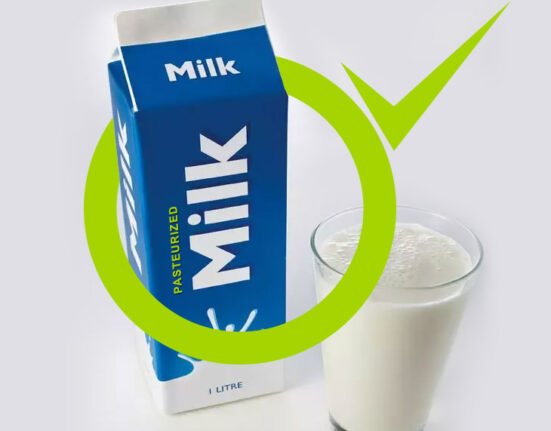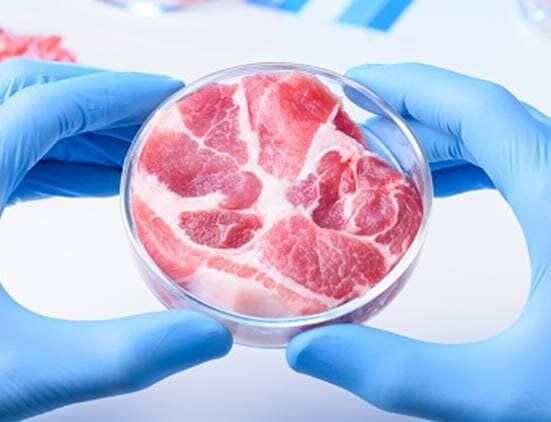India is home to 126 million productive cows and buffaloes, making the country the largest milk producer in the world. Yet, as mentioned in the February 2024 Budget Session, milk productivity—or milk production per animal—remains low. According to the Food and Agriculture Organization (FAO) of the United Nations, Indian breeds produce an average of 1,550 liters of milk per year, compared to 10,000 liters per year produced by breeds in the United States and Canada. Rearing these exotic breeds in India might not be a viable solution to address the low milk productivity, considering their extreme susceptibility to diseases in our climatic conditions.
However, tackling the emissions from the dairy industry could provide a solution to this issue. A study by Agriculture and Agri-Food Canada shows that reducing methane emissions from the dairy industry by 20% could increase milk yield by 1 liter per day per cow. This could result in an additional 38 billion liters of milk per year or an increase in revenue of INR 2.2 lakh crore per year for India.
Emissions from Dairy Cattle
Dairy cattle are a major source of greenhouse gases (GHGs) such as carbon dioxide, methane, and nitrous oxide, primarily produced during their digestion and maintenance. Among these, enteric fermentation is the most prominent source of emissions, accounting for 75% of emissions from the Indian dairy industry, according to estimates by the National Dairy Development Board (NDDB). Enteric fermentation refers to a digestion process in which bacteria in the animal’s gut break down feed, generating methane. The FAO describes how up to 12% of the gross energy intake is lost as methane, which is detrimental not only to milk productivity but also to the environment.
Strategies to Reduce Methane Emissions and Improve Productivity
Feed-Based Solutions
Digestion influences methane emissions, meaning the nature of the feed is of primary importance. According to a Korean study, modifications in diet can reduce methane emissions from cattle by up to 60%. Therefore, the Indian dairy industry should explore solutions to ease the digestion process, including fine grinding of feed into pellets and switching to a more grain- or silage-based diet instead of a fully hay-based one. Additionally, small supplements such as red algae, biochar, and essential oils can help overcome deficiencies and reduce emissions. For instance, research indicates that adding a red algae supplement equal to 0.25-0.5% of total feed can reduce methane emissions by 45-68%.
Health Monitoring
Constant monitoring of cattle health is also essential for maintaining low methane emissions. For optimal animal health, the ambient temperature should not exceed 25°C. Temperatures beyond this can cause heat stress. The Temperature-Humidity Index (THI), which helps assess heat stress in cattle based on surrounding temperature and humidity, can significantly impact losses if a threshold is crossed. According to a study at the National Dairy Research Center, the daily milk yield of indigenous cattle decreases by 0.86 liters per unit increase in THI. This is one reason for low milk production in summer or the “lean season.” Cattle stressed by heat, insufficient living space, and other social factors tend to experience reduced digestion—a factor that affects both productivity and emissions. Taking steps to ensure clean and well-ventilated living spaces for cattle could go a long way in reducing emissions and boosting productivity. Some Indian start-ups are already working on solutions to monitor cattle heat and health.
The states of Uttar Pradesh, Rajasthan, and Madhya Pradesh—major milk producers—are the largest methane emitters in the country. These are also the states that house the greatest number of cattle. Therefore, India should focus on improving cattle health and managing associated emissions, especially in these states.
Going Forward
As emissions are a valuable indicator of the dairy industry’s productivity, measures to reduce emissions are crucial for India at this stage. Globally, Denmark is leading the way by focusing on methane emissions from the dairy industry and taxing emitters. While this rigid mechanism has garnered criticism, acknowledging these emissions is an important lesson for India.
Programs such as the Maharashtra Methane Mission, which targets emission reduction by emphasizing the enrichment of cattle feed, can serve as a role model for other states. Investing in cattle feed and health improvements could target emissions while significantly boosting milk productivity, as outlined in the Rashtriya Gokul Mission. These steps will not only boost India’s milk productivity but also help the country achieve its Sustainable Development Goals (SDGs) related to emissions reduction.
Source: Economic times







